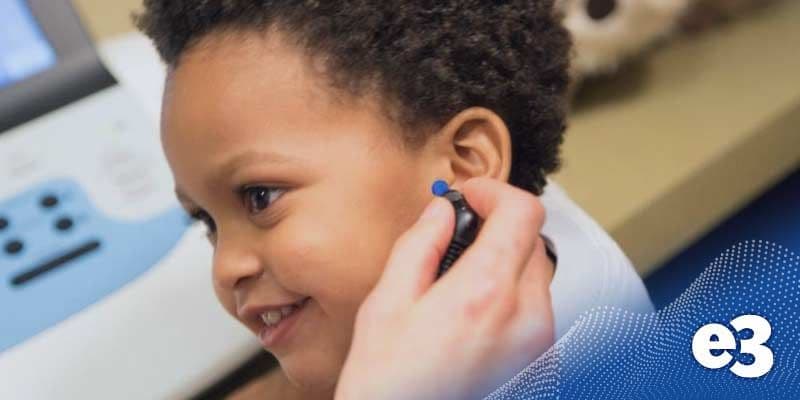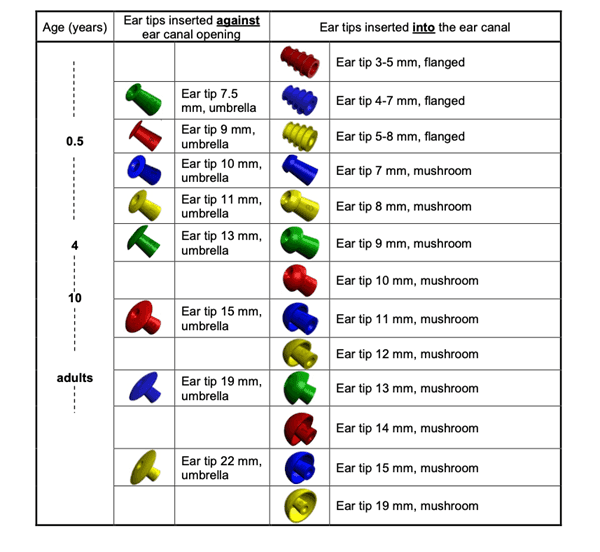A Guide to Choosing the Right Tympanometry Ear Tip

While choosing the correct tympanometry ear tip requires experience and practice, this guide provides helpful tips on what to consider and factors that affect maintaining a proper seal.

While choosing the correct tympanometry ear tip requires experience and practice, this guide provides helpful tips on what to consider and factors that affect maintaining a proper seal.
Since ear canals vary in size, selecting an ear tip that properly matches the patient’s ear canal is essential. An ear tip that’s too small can lead to air leaks, while one that’s too large may cause discomfort and fail to fit properly.
Ear canals are not only different in size but also in shape. Some ear canals are more oval, while others are round. Selecting an ear tip that conforms to the shape of the ear canal helps in achieving a better seal and more accurate measurements.
Tympanometry ear tips are available in soft plastic, rubber, and silicone, and most are latex-free. For instance, Sanibel ear tips are made from latex-free silicone or technical rubber. Silicone tips are flexible, provide a good seal, and ensure patient comfort.
Typically, flanged or mushroom-shaped ear tips are used for most tests, including tympanometry, DPOAE, TEOAE, and Automated ABR. Occasionally, an umbrella-shaped ear tip is preferred for quick tympanometry screenings.
You can use this table from Interacoustics as a helpful guide for selecting the right ear tip size based on age.

Maintaining a proper seal during tympanometry can be tricky. Here are some common reasons why:
The ear tip is a small, yet vital component of the tympanometry test. It must fit snugly in the ear canal to create an airtight seal. An improper fit can lead to inaccurate measurements, which can affect the diagnosis and treatment plan. A proper seal is essential for:
One of the primary uses of tympanometry is to detect fluid in the middle ear. Fluid can affect the mobility of the tympanic membrane, leading to abnormal tympanometry results. A correct ear tip ensures that the measurements reflect the true condition of the middle ear, aiding in the diagnosis of conditions such as otitis media with effusion.
Accurate tympanometry measurements depend on the ability to measure canal volume and air pressure changes effectively. The ear tip plays a crucial role in this process:
Selecting the correct tympanometry tip is essential for obtaining accurate middle ear measurements. By considering factors such as ear tip size, ear canal shape, material, and comfort, healthcare professionals can ensure reliable and precise tympanometry results. This, in turn, leads to better diagnosis and treatment of middle ear conditions.
To find the correct ear tip for your device, use our exclusive “Shop by Equipment” function on mye3Shop.com
Browse our selection of the latest tympanometers
Other Good Reads: The Top Audiology Supplies Every Hearing Clinic Needs